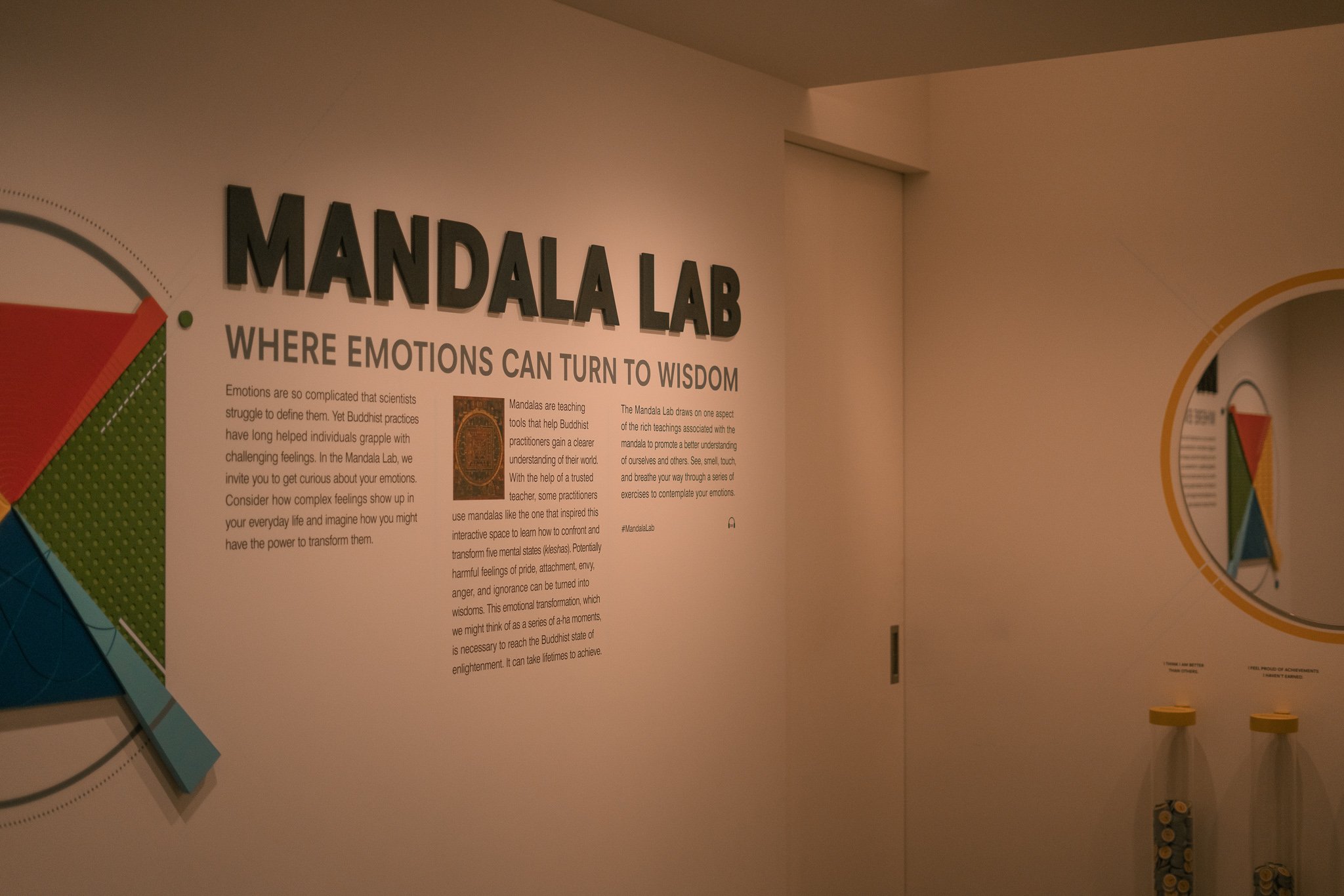Emotions, Mandalas And Buddhism: A Reflection On The Rubin's Interactive Exhibit
The opening wall of the Mandala Lab. Photo by Bethany Johnson
(REVIEW) Museum goers are challenged to “transform” their emotions at the Rubin Museum of Art’s latest exhibit: “Mandala Lab.” The Rubin Museum collects art from Himalayan cultures and regions — primarily Tibet.
In the lab, the opening wall inscription promises that “emotions can turn to wisdom.” Interactive exercises inspired by Buddhist practices like meditation steer visitors toward inward journeys. The exhibit opened to the public on Oct. 1, 2021. and will continue to be on view till Oct. 1, 2031. It aims for those who complete the interactions to leave with a greater awareness of their emotions and a new understanding of how Buddhism and its art, used as sacred tools, can improve one’s everyday life.
The exhibit begins by introducing the visitor to the mandala — a Buddhist image representing the universe and different aspects of Buddhist teachings — which can help one overcome emotions of pride, attachment, envy, anger and ignorance.
A mandala on the wall at the Rubin. Photo by Bethany Johnson
“All great art helps us see each other from the inside out, but Buddhist art goes a step further,” said Dawn Eshelman, the head of programs at the Rubin, commenting in a YouTube video about the exhibit. “It provides a kind of visual to help us survive in uncertain times.”
Mandala images have long appeared in Western art and popular culture but are often detached from their spiritual significance to Buddhism, Hinduism and other ancient Eastern faiths — as well as their cultural roots in India, Nepal and Tibet. The exhibit highlights the mandala’s role in Buddhism: It maps the practitioner's journey toward enlightenment and the overcoming of painful emotions and welcomes the guest to follow along, Buddhist or not.
The Mandala Lab’s breathing exercise. Photo by Bethany Johnson
“To me it’s not really about religion. It’s just a way to meditate,” said Anna Lofgren after finishing her walk -through of the “Mandala Lab” during her visit to the city from Sweden. “I think the idea here is really that you should be open to everything.”
Visitors are invited to breathe out envy by timing their inhaling and exhaling with the pulse of a large light. Then they strike a gong to dispatch their anger and lower it into a pool of water. Each station aims to show the visitor how their external encounters influence them internally.
A man lowers a gong into the water. Photo by Bethany Johnson
Jessica Yang, a Tibetan Buddhist whose husband is unfamiliar with Buddhism, believes the museum accurately educates visitors on the meaning and significance of Buddhist practices.
“They are transferring your anger — as an emotion — to something beautiful because you see the waves of the water so you can see it transform into something beautiful and let go of your anger, and that is the essential idea of Buddhism,” Jessica said after experiencing the exhibit.
A visitor experiencing the exhibit. Photo by Bethany Johnson
Mandala Lab is on exhibit at the Rubin until 2031.
Bethany Johnson lives in Brooklyn, New York, as a journalism student at The King’s College. She currently works as a photographer for The King's College and has spent the past summer traveling internationally to film stories, circumstances, and experiences of individuals for the nonprofit Extreme Response. She received Society of Professional Journalists’ honorable mention for her photo gallery “On the Streets of New York.“





